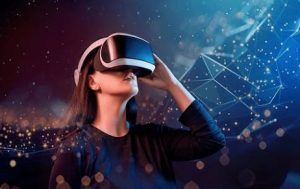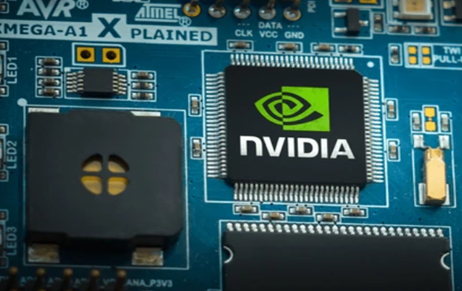Freescale Semiconductor is a leading technology company focused on innovation and creating and monetizing its…
Virtual Reality Innovations and Applications: Bridging Technology and Real-World Impact
Virtual reality technology innovations and applications
Virtual reality technology has dramatically changed the face of many industries with its numerous applications. Virtual reality offers a 360-degree video and exciting storytelling, bringing gamification and entertainment. Virtual reality enhances the process of learning in training and education by offering virtual classrooms and educational simulations. The use of VR in healthcare includes the treatment of pain and surgical training.
Architectural visualization is the three-dimensional model of buildings and environments in architecture and design. Virtual tours, however, let the potential customer see the properties before it’s built during the planning process. Virtual tours in tourism and property allow prospective customers to see places remotely. Virtual reality allows for an educationally different experience by reenacting historical sites and events.
Social VR platforms, conferences, and virtual meetings increase social interaction in VR. VR is used in the healthcare sector to treat phobias, PTSD, anxiety disorders, etc., through exposure therapy, physical therapy, and more. All exercises with VR support both physical therapy and rehabilitation.
New art forms and engaging interactive exhibitions engage visitors with innovative means through VR. Military training, sports and exercise, and servicing and fixing besides prototype development for consumer usage of VR throughout the process of making and industrial application. The sports enthusiast can receive an angle that cannot be acquired through regular gaming and sporting.
Virtual Reality Simulations Military and defense sector uses VR simulations to their planning of tactical maneuvers, running a vehicle, and combats. As it is developing, so the possibility of the innovation is that the gear may be accessible, affordable, and further breakthroughs are expected to be seen.
Software Innovations: Types and Technological Advancement
Some of the major industries that are developing software-based technological innovations include AI, machine learning, blockchain, cryptocurrency, cloud computing, virtualization, cybersecurity, augmented reality, quantum computing, natural language processing, data analytics, big data, 5G, edge computing, and DevOps. AI and machine learning change the landscape of natural language analysis, autonomous systems, image identification, recommendation systems, and even machine learning itself.
IoT software platforms enable real-time analysis and processing of data. Smart blockchain technology is used in order to automate management of supply chains and financial procedures.
Cloud computing and virtualization have streamlined making and distributing software, but what the containerisation technologies-the likes of Docker and Kubernetes-have done to change how applications are deployed, scaled, and managed. Cybersecurity advancements include AI-Enhanced Security, Zero Trust Architecture, and AR and VR applications development. The development in quantum computing is now on the algorithms that can use quantum power to potentially crack through tough cryptography and optimisation problems.
Although NLP is being applied for sentiment analysis and social media analysis, its development has led to the generation of very sophisticated chatbots, virtual assistants, and language translation services. Big data tools and platforms have now allowed the processing and analysis of large datasets for findings and decision-making purposes, and real-time statistics are needed for industrial and financial trade. Thanks to 5G and edge computing infrastructure, the IoT and AI applications can now analyze and communicate data at high speeds with low latency. Given the fact that software developments are constantly changing and revolutionizing industries, professionals and organizations need to compete and apply advanced technologies.
METAVERSE, VIRTUAL REALITY, AND SOFTWARE DEVELOPMENT
It is the most dynamic field, as much scope may be present for innovation, as can be developed and applied there. The Metaverse is described as a virtual world used to give an immersive and enhanced sense of interaction or participation to users. Virtual Reality technology involves new experience creation of interaction or activity through developing and integrating contents. This will enable users to design virtual locations, virtual objects, and virtual experiences. Thus, the metaverse requires user-generated content.
Software development is a necessity to design and manage virtual currencies and payment systems for trading and doing business in the metaverse. The security software also requires protecting user’s data, privacy, and virtual assets. Even though educational software is built specifically for training simulations and virtual classrooms, virtual reality gaming can be integrated into the games from game developers.

Enhancing experiences and services in the metaverse requires a strong base in data analytics and user insights. Cross-platform compatibility ensures a seamless user experience. AI and machine learning help with content creation, personalization of experiences, and improvement in user interactions. Developers may create realistic environments, mimic physics, and construct virtual worlds with world building software.
Some metaverse projects explore blockchain and smart contracts for the management of asset and virtual property need to be decentralized and joined to blockchain technology. Integration with AR is also necessary so that digital information will be superimposed onto the real world in the metaverse.
It has also provided an opportunity for developers and companies to collaborate in creating metaverse experiences that are immersive, dynamic, and feature rich.
LEGAL FRAMEWORK INDIAN PATENT ACT
Overview of Indian Patent Act
According to WIPO, patent refers to an exclusive right granted for an invention, which is understood as a product or even a process that offers new methods of doing it or a new technical solution to the problem provided. To achieve a patent is through revealing some technical information regarding the inventive concept to the public for allowance in a patent application.
Indian Patent Act gives rights to patents for inventions that are new, involve an inventive step, and are capable of industrial application. A patent in India has a term of 20 years from the date of filing an application.
Patentability criteria: Novelty, Inventiveness and Industrial Applicability
Patentability of an invention is established on three prime key criteria: namely, novelty, inventiveness or the said product not obvious and industrial applicability. All these criteria judge, as a matter of generalisation, whether an invention is novel, inventive and having practical utility.
NOVELTY: Novelty is that every invention should be novel or not copied by any prior or existing art. Prior art may include any information which is out in the open or publicly available to anybody before the filing date of the patent application.
An invention has to not be known anywhere in the world before the patent application’s filing date for it to become a global standard. To be deemed novel, an invention has to not have been publicly disclosed, used, or available to the public anywhere in the world before the filing date of the patent application. Publications, public use, public accessibility, and any other form of public disclosure affecting the novelty of an invention are excluded from being deemed as such.
Patents and software innovations: international perspective
There has always been a delicate cross when it comes to patent and software innovations. Over the years, there has been diverse approaches to meeting the same on a universal level. Different countries at whole levels have taken divergent positions as to how appealing patentability of software innovation should be. The US has in the past afforded more pervasiveness for patent protection to be enjoyed for software compared to other European countries that have been considered much more restrictive in this regard.
Software patents have been awarded in the United States for decades with much innovation but also patent litigation. However, with time, the requirements to be patent eligible evolved through the court decisions that made patents hard to obtain for some types of software.
Internationally, there are agreements that set minimum standards on intellectual property protection. The Agreement on Trade-Related Aspects of Intellectual Property Rights previously included patents and others. However, the application of standards is different in each country due to their interpretation and practices.
And now technology does not just bring change but also fresh faces, whereas innovation may pose different but changing questions and controversies on ethics and even equitability in patent ideas for such software products, similarly AI and machine learning.
The relationship between patents and software innovations is uncertain and in constant evolution in a global setting. Countries must also tread this sensitive balance between patent protection as an incentive for innovation and the danger of overly broad patents that might stifle competition or creativity in the software industry. It is a landscape constantly changing with new technologies emerging and the legal frameworks being developed to challenge them.
Author: Kaustubh Kumar, in case of any queries please contact/write back to us via email to chhavi@khuranaandkhurana.com or at IIPRD.
References
- Blatt, J.J., 1994. Software Patents: Myth vs. Virtual Reality. Hastings Comm. & Ent. LJ, 17, p.795. https://repository.uclawsf.edu/cgi/viewcontent.cgi?article=1411&context=hastings_comm_ent_law_journal
- Greenberg, A., 2020. Protecting virtual things: patentability of artificial intelligence technology for the internet of things. IDEA, 60, p.328. https://law.unh.edu/sites/default/files/media/2020/08/greenberg_-_finished.pdf
- Patents (no date) WIPO. Available at: https://www.wipo.int/patents/en/#:~:text=A%20patent%20is%20an%20exclusive,public%20in%20a%20patent%20application. (Accessed: 11 November 2023).



